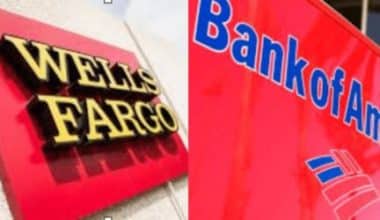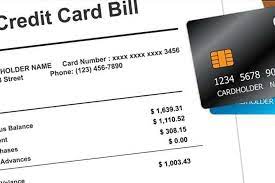Sunk costs are expenses that you have already paid for but cannot recover, also known as retrospective costs. These costs in business include things like marketing, research, installing new software or equipment, paying for salaries and benefits, or maintaining facilities. Money that you spend and cannot recover is an example of a “sunk cost.” In business, the sunk cost fallacy frequently occurs when management is unwilling to change direction even when initial plans don’t work out.
Sunk Cost
Sunk costs are previously incurred costs that are not recoverable. These costs are distinct from potential costs that a business might face down the road, like decisions about product pricing or the price of stocking up on inventory. Future business decisions do not take sunk costs into account because they will not change irrespective of the outcome.
In business, you frequently ignore sunk costs because they have no bearing on present or future budgetary issues. Sunk costs are also known as prior-year costs, stranded costs, past costs, embedded costs, sunk capital, and retrospective costs.
Sunk costs are sums of money that you spend and cannot recover. For instance, a manufacturer may have several sunk costs, such as the price of machinery, equipment, and factory lease payments. You don’t include sunk costs in the decision to sell or process further, which applies to goods that you either sell “as-is” or process further.
Sunk costs don’t just affect companies; they also affect private individuals. Consider spending $100 on a dance class only to find out the next day that you are unable to attend. You can consider the $100 you spend as a sunk cost, so it will not affect future decisions about whether to purchase theater tickets. Businesses tend to focus more on fixed and sunk costs than on people because both have an impact on profits.
Although some fixed costs are not sunk costs, a sunk cost is always categorized as a fixed cost. Equipment that you customize and for which there is no secondary market is an example of a fixed cost that you cannot recover. It is possible to recoup a fixed cost that is not a sunk cost by selling it to a third party; for instance, a tractor that you sell on the secondary market is not a sunk cost.
Sunk Cost Example
#1. Research and Development Sunk Cost
A company makes a multi-year investment of $2,000,000 in the development of a left-handed smoke shifter. No one purchases any units after you produce them because the market lacks interest. The $2,000,000 development cost is one you cannot take into account when deciding whether to keep selling the product or stop. A good example of a sunk cost is the capital you spend on research.
#2. Training Sunk Cost
The capital you use to train staff is also a good example of a sunk cost. To train staff members to use a new ERP system. The program ends up being extremely confusing and unreliable. When you decide not to use the new ERP system, the $10,000 is a sunk cost and you should not take it into consideration.
#3. Hiring Bonus Sunk Cost
The company pays the new hire $10,000 to join the team. When deciding whether to fire the person if it turns out they are unreliable, the $10,000 payment should be seen as a sunk cost. This is a good example of a sunk cost.
#4. Marketing Study Sunk Cost
A company spends $50,000 on a marketing analysis to ascertain the potential of its brand-new hair accessory. The study concludes that the hair accessory won’t be financially successful. The $50,000 has already been paid in full. Even though the initial investment was substantial, the business shouldn’t keep funding the hair accessory project.
Expenses that cannot be recovered in full, such as wages, insurance, rent, nonrefundable deposits, and repairs, are additional examples of sunk costs. Consider a situation where a company decides it needs to expand the size of its warehouse. In exchange for a fee, it hires an architect to produce some rough drawings for the design of a new space. After that, the economy starts to falter, and the business isn’t sure whether to keep building the new warehouse. The amount paid to the architect is an example of sunk cost.
A $5 million investment in a warehouse that is expected to cost $10 million is an illustration of a sunk cost. Sunk costs, or the $5 million already spent, shouldn’t be considered when determining whether or not to finish the factory. Instead, expectations for future costs and returns after the factory is operational should be taken into consideration.
Sunk Cost Definition Economics
According to economists, sunk costs shouldn’t theoretically affect choices made in the future. However, sunk costs can and frequently do have a significant impact on choices made today. In the economic decision-making process, you treat sunk costs as bygone and don’t take them into consideration when deciding whether to continue an investment project.
Sunk Cost Fallacy
Due to a psychological barrier known as the sunk cost fallacy, people are compelled to continue with futile projects even though they have already spent money on them. When making decisions, a person or organization may fall victim to the sunk cost fallacy.
When you commit resources to a project, the basic tenet of this fallacy is that the current course of action becomes acceptable. As a result of basing long-term strategic planning decisions on committed short-term costs, this oversight could have unintended consequences.
In business, the sunk cost fallacy frequently occurs when management is unwilling to change direction even when initial plans don’t pan out. The sunk cost fallacy takes into account the sentiments of investors, which can cause otherwise irrational choices. The sunk cost fallacy asserts that additional investments are necessary, or earlier ones would have been useless.
If the sunk cost fallacy were true, the company would still invest money in the project in the hopes of eventually making a profit. Another expression used to describe this is “throwing good money after bad.”
For example, Jennifer spends $50 to join a recently established dancing club. Jennifer attends three of the five sessions before deciding that the club’s dancing lessons do not help her at all. She decides to go to the final two sessions even though it won’t help because the $50 registration fee is too good to pass up.
What Factors Contribute to the Sunk Cost Fallacy in Decision-Making?
#1. Loss Aversion
This is the propensity to prefer averting a loss to making a comparable gain. These people are reluctant to commit to a guaranteed loss (i.e., terminating a project with sunk costs) because they have a low-risk tolerance.
#2. Overly Optimistic Probability Bias
This is a conviction that investing now will result in higher returns later.
#3. Accountability on Individual/Group Level
Making the connection between the effort put forth and the money spent. A particular project or decision may cause someone to feel emotionally invested in it or responsible for it.
#4. Wasteful
This is a desire to avoid appearing to be a time, resource, or financial waste on a project. Unfortunately, not every opportunity is profitable because investing in due diligence, particularly in research and development, may be futile.
An individual who purchases a ticket in advance for an event they ultimately choose not to attend, for example, makes a semi-public commitment to do so. They might prefer to keep this mistake in their judgment to themselves, but leaving early would reveal it to strangers. Additionally, since they already paid for the event, the person might feel that leaving would be a waste of their money.
How To Avoid Sunk Cost Fallacy When Making Decisions
#1. Knowing What You Want To Achieve
A very specific problem that you need to solve must be the starting point for decision-making. This process helps distinguish between what is important and what you should consider a distraction.
#2. Accept Uncertainty
Your chances of success rise if you are receptive to opportunity and change. Investors who learn to accept risk more and let go of risk aversion will be better able to accept that they have incurred sunk costs that will never be recoverable.
#3. Avoid Taking it Personally.
In making business decisions, people may become too emotionally invested and lose perspective on the actual situation. Business decisions can emotionally engulf people to the point where they lose sight of the situation at hand. It’s crucial to keep in mind that making the right decision should be more important than anything else because unsuccessful projects don’t always reflect the decision-maker.
What Is A Sunk Cost Dilemma?
You experience a “sunk cost dilemma” when deciding whether to continue with a project after investing. In other words, the predicament you are in forces you to decide whether to stop losing money. Given that you already invested in your project, it is imperative that you carefully consider whether to continue. Even though sometimes it’s better to go your separate ways, it’s also possible that sticking to your plan or project will bring you greater rewards and help you rack up less debt than if you had taken the other path
Importance of Sunk Cost
Sunk costs are important because they might serve as a deterrent when making decisions. Because you can incur them regardless of the decision you make, you don’t take sunk costs into account when a business compares costs and benefits. Because doing so might result in a more unfavorable decision. Nevertheless, the businesses and people who have incurred these stranded costs learn a valuable lesson from them. These may still provide guidance even though they have no direct bearing on choices.
How Do You Determine Sunk Cost?
You can calculate this value by taking the purchase price a business or individual paid at the time of purchase and subtracting it from the current value. To ascertain the sunk cost of the replacement equipment, locate the item’s most recent as-new market value. Next, try to ascertain the item’s current market value, which ought to be possible with some online research. Then, deduct the current value from the initial cost to derive the sunk cost.
Are Salaries Sunk Costs?
Sunk costs refer to wages that have already been paid to employees. As long as those wages are not recoverable, that salary represents a forgone investment that the company cannot recoup.
Sunk Cost vs. Fixed Cost?
Fixed costs in business are expenditures that a company must make regardless of the particular tasks it performs. Changes in the output or sales volume of a company do not affect them, and do not change in response to those changes.
Sunk costs, or more specifically, fixed costs that are “unrecoverable,” are a subset of all fixed costs. Fixed costs include all sunk costs. It’s important to realize that not all fixed costs fall under the definition of a “sunk cost.”
Sunk Cost Example in Real Life
You can commit the sunk cost fallacy when you decide to keep on watching a boring movie after paying for the ticket. Another example is the choice to keep an incompetent employee on staff rather than fire them because the company has already spent tens of thousands of dollars on their training.
How Do You Manage Sunk Costs?
#1. Encourage Creative Thinking
By prioritizing innovation and urging everyone to accept adapting business strategies, it will be easier to identify bad investments. Flexibility and adaptability are desirable qualities in the business world. You can keep your business procedures flexible and increase your capacity to identify desirable solutions by deciding to disregard sunk costs.
The sooner you recognize sunk costs and change your strategy, the less likely it is that you will incur additional losses. With experience, it becomes easier to recognize when you’re using the sunk cost fallacy in your decision-making. The more you do things that don’t help you achieve your long-term goals, the easier it will be to overcome future instances of sunk costs that could harm the success of your business.
#2. Be Unbiased
By maintaining objectivity, you can get past any emotional attachments that might otherwise cloud your judgment when making business decisions. You can more accurately assess the efficacy of various decisions and select the best option for you or your business by remaining objective and using logical decision-making techniques.
#3. Keep Watch Over Your Investments and Potential Opportunity Costs.
It is crucial to take opportunity costs into account as well. If you stick to the original plan, you forgo other opportunities to use your resources—human, material, and financial.
Make sure you monitor your spending and are conscious of your time and financial obligations. A good way to do this is to maintain a schedule and keep track of how many hours you spend on each project.
Conclusion
Both individuals and businesses must deal with sunk costs. Sunk costs, which can refer to anything from the food in your refrigerator to the staff members a company has up to the capital projects your local government plans to fund, are a built-in element of finance. When you incur these costs, you cannot recover them back, so you should not consider them when making decisions in the future because they will always result in the same expense.
Sunk Costs FAQs
What Are Sunk Costs?
Sunk costs are expenses that you have already been paid for but cannot recover.
How Do You Manage Sunk Costs?
- Encourage creative thinking
- Be unbiased
Are Salaries Sunk costs?
As long as those wages are not recoverable, that salary represents a forgone investment that the company cannot recoup.






